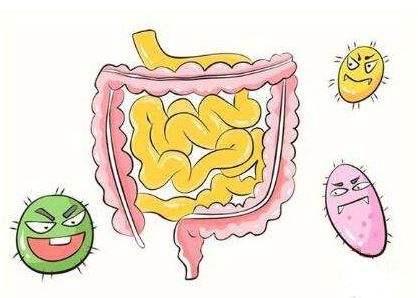SCI论文(www.lunwensci.com):
摘要:髓源性抑制细胞(Myeloid-derived suppressor cells,MDSCs)是一组具有免疫抑制作用的异质性细胞,可抑制CD4+及CD8+T细胞介导的免疫反应,进而促进炎症反应、肿瘤形成及转移。髓源性抑制细胞(MDSCs)参与多种炎症、自身免疫性疾病及肿瘤的病理变化。本文中就髓源性抑制细胞(MDSCs)在消化道疾病中的近年来的相关进展进行归纳。
关键词:髓源性抑制细胞;消化道疾病;免疫调节
本文引用格式:章璧莹,毛建山.髓源性抑制细胞在消化道疾病中的研究进展[J].世界最新医学信息文摘,2019,6(92):85-87.
Advances of Myeloid-derived Suppressor Cells in the Gastrointestinal Diseases
ZHANG Bi-ying,MAO Jian-shan*
(The Second Affiliated hospital of Zhejiang University School of Medicine,Hangzhou Zhejiang)
ABSTRACT:Myeloid-derived suppressor cells(MDSCs)are a kind of heterogeneous cells with immunosuppressive activity,which can inhibit the immunity mediated by CD4+and CD8+T cells,stimulate inflammation,promote tumor formation and metastasis.Myeloid-derived suppressor cells(MDSCs)are involved in a variety of pathological changes in inflammation,autoimmune diseases,and tumors.In this paper,we summarized the current progression of myeloid-derived suppressor cells(MDSCs)in digestive tract diseases.
KEY WORDS:Myeloid-derived suppressor cells(MDSCs);Gastrointestinal diseases;Immunoregulation
0引言
免疫调节在维持机体生理平衡中起着重要作用,髓源性抑制细胞(Myeloid-derived suppressor cells,MDSCs)通过多种机制维持机体的免疫耐受,参与炎症、自身免疫性疾病及肿瘤等多种疾病的发生发展,是肿瘤微环境(Tumor microenvironment,TME)中最重要的免疫抑制细胞。近年来关于MDSCs的研究也逐渐增多,本文就MDSCs在消化道疾病中的研究进展进行综述如下。
1MDSCs的命名与分类
在20世纪80年代初,Strober等人研究鉴定了一群具有免疫抑制功能的细胞群,它们能够抑制T细胞增殖及细胞毒性T淋巴细胞的产生,随后在多种癌症中也同样发现了类似的细胞群体[1,2]。2007年Gabrilovich将这一类细胞群定义为髓源性抑制细胞(MDSCs)[3]。在正常理想情况下,人体内不存在MDSCs,造血干细胞在生理条件下可分化成单核细胞及中性粒细胞,单核细胞可进一步分化成巨噬细胞及树突状细胞;而当体内存在慢性炎症刺激、自身免疫疾病或肿瘤时,造血干细胞在病理条件下会异常分化成单核细胞样MDSCs(mononuclear MDSCs,M-MDSCs)以及粒细胞样MDSCs(granulocytic MDSCs,G-MDSCs),其中M-MDSCs可继续分化形成肿瘤相关的巨噬细胞(Tumor-associated macrophages,TAM)[4]。
在小鼠肿瘤模型中,小鼠的MDSCs共同表达抗原Gr-1和CD11b,这两者是小鼠MDSCs的特异性标志物,根据两个抗原的表达情况,可进一步分为M-MDSCs(CD11b+Gr1+Ly6G-/loLy6C+)及G-MDSCs(CD11b+Gr1+Ly6G+Ly6C-)[5]。而人类MDSCs的表面标志物至今仍存在争议,目前通常采用CD33、CD15、CD14、CD11b、CD66b及HLA-DR等组合来表示,分为M-MDSCs(CD33+CD11b+CD14+CD15-HLA-DR-/low)及G-MDSCs(CD33+CD11b+CD14-CD15+CD66b+HLA-DR-/low)[5-8]。
2MDSCs与消化道疾病
2.1MDSCs与非肿瘤性消化道疾病
(1)MDSCs与食管炎食管Barrett化生是食管受慢性炎症刺激后的改变,属于癌前病变,而MDSCs可促进食管Barrett化生。Kong等人在小鼠模型研究中发现,食管上皮、角化鳞状细胞等可分泌钙结合蛋白S100A8/A9异源二聚体(S100 calcium-binding proteins A8 and A9 heterodimer,S100A8/A9)、白细胞介素-17(interleukin-17,IL-17)等促炎因子,而这些促炎因子是CD11b+Gr-1+MDSCs发育的关键调节因子,MDSCs可进一步抑制CD8+T细胞,进而抑制细胞免疫,促进食管炎形成;同时MDSCs可抑制食管细胞凋亡,最终促进食管Barrett化生[9]。
(2)MDSCs与胃炎MDSCs在胃炎状态下表达水平显著增多,可促进胃黏膜化生。Tu等人在白细胞素-1β(interleukin-1β,IL-1β)转基因小鼠模型相关研究中发现,转基因小鼠中人IL-1β的胃特异性表达可导致小鼠自发性胃炎的形成,使得小鼠外周血、胃组织及脾脏中MDSCs的表达水平显著增多,研究表明IL-1β可通过核因子-κB(nuclear factor-κB,NF-κB)途径激活MDSCs;活化了的MDSCs可通过分泌肿瘤坏死因子α(tumor necrosis factorα,TNF-α)、白细胞介素-6(interleukin-6,IL-6)等炎症因子加重胃炎[10]。Ding等人在幽门螺杆菌(helicobacter pylori,HP)感染的小鼠模型研究中发现,HP感染可通过激活Hedgehog配体,募集骨髓中schlafen4+细胞至胃黏膜,最终促进解痉多肽表达化生(spasmolytic polypeptide-expressing metaplasia,SPEM);同时研究发现schlafen4+细胞表型与G-MDSCs一致,于是认为MDSCs可促进幽门螺杆菌感染相关性胃炎及胃黏膜化生[11]。Zhuang等人通过流式细胞术、逆转录-聚合酶链反应(Reverse transcription-polymerase chain reaction,RT-PCR)及酶联免疫吸附测定(enzyme-linked immunosorbent assay,ELISA)等方法分析,发现HP感染后,患者胃组织内MDSCs的水平较健康人显著增多。研究表明,HP感染时,树突状细胞(dendritic cell,DC)可分泌白细胞介素-23(interleukin-23,IL-23)促进Th22细胞(T-helper cell,Th22)极化,从而通过白细胞介素-22(interleukin-22,IL-22)依赖的趋化因子配体2/趋化因子受体2(chemokine ligand 2/chemokine receptor 2,CXCL2/CXCR2)途径募集MDSCs至胃黏膜;同时,MDSCs可产生S100A8/A9等促炎蛋白,并抑制Th1型细胞应答,最终促进幽门螺杆菌相关性胃炎的发生发展[12]。
(3)MDSCs与肠炎MDSCs在溃疡性结肠炎早期可促进黏膜修复,而在慢性结肠炎中MDSCs与疾病活动相关。Haile等人最早在T细胞依赖的炎症性肠病(inflammatory bowel disease,IBD)小鼠模型研究中发现,IBD小鼠外周血中Gr1+CD11b+MDSCs增多,且该细胞可抑制T细胞免疫反应;此外,Haile等人发现,与健康人外周血相比,IBD患者外周血中CD14+HLA-DR-MDSC(s M-MDSCs)水平显著升高;但是,在葡聚糖硫酸钠(dextran sulphate sodium,DSS)处理的小鼠外周血中Gr1+CD11b+MDSCs未见明显增多,于是他们提出Gr1+CD11b+MDSCs只存在于T细胞依赖的结肠炎中[13]。与之相反,Zhang等人在DSS处理的小鼠模型研究中发现,部分DSS处理过的小鼠外周血中可见Gr1+CD11b+MDSCs水平升高,且在溃疡性结肠炎恢复期MDSCs的水平升高明显,提示该细胞可能在溃疡性结肠炎早期促进黏膜修复[14]。Xi等人发现,在炎症性肠病活动期,患者外周血中CD14+HLA-DR-/low MDSCs(M-MDSCs)水平显著升高;同时Xi等人通过小鼠模型证实,DSS结肠炎小鼠骨髓、脾脏以及外周血中的MDSCs水平均高于对照组小鼠[15]。Lee等在溃疡性结肠炎小鼠模型研究中发现,调节性T细胞(Regulatory T cells,Tregs)在转化生长因子-β(transforming growth factor-β,TGF-β)的作用下可促进MDSCs的分化,促进MDSCs释放炎症因子;同时MDSCs又可正反馈调节Tregs细胞的增殖,最终促进溃疡性结肠炎的进展[16]。
(4)MDSCs与肝炎MDSCs在肝脏炎症疾病状态下表达上调,促进肝炎进展。Lv等人研究发现,慢性乙型病毒性肝炎(hepatitis B virus,HBV)患者与健康对照相比,外周血中MDSCs及白细胞介素-10(interleukin-10,IL-10)水平显著升高,γ-干扰素(Interferon-γ,IFN-γ)水平显著降低;且MDSCs含量与Th1细胞呈负相关,与血清HBV DNA载量以及肝功能损伤呈正相关,提出MDSCs高表达提示该类患者预后差[17]。Zeng等人发现,HBV相关的慢性急性肝衰竭(acute-on-chronic liver failure,ACLF)患者与健康对照相比,外周血中CD33+CD14+CD11b+HLA-DR-/low MDSCs显著增加,且CD4+/CD8+T细胞频率及CD3ζ链表达降低,认为外周MDSCs的扩增与HBV相关性ACLF的疾病严重性及进展密切相关[18]。Wang等人发现,在慢性丙型病毒性肝炎患者外周血中G-MDSCs(HLA-DR-/lowCD33+CD14-CD11b+)显著升高,且G-MDSCs频率与血清丙型肝炎病毒核心蛋白水平呈正相关,并与患者预后相关;研究发现,丙型肝炎病毒(hepatitis C virus,HCV)可通过激活ERK1/2信号通路,进而促进IL-10的产生,从而激活信号传导及转录激活因子3(Signal transducers and activators of transcription 3,STAT3)信号转导通路,最终抑制T细胞产生IFN-γ,导致T细胞的功能受损以维持免疫抑制[19]。
2.2MDSCs与消化道肿瘤
(1)MDSCs与食管癌MDSCs在食管癌中表达上调,以M-MDSCs为主,是不良预后的指标。Chen等人先通过免疫组化检测食管鳞状细胞癌(esophageal squamous cell carcinoma,ESCC)患者肿瘤组织及邻近组织中醛脱氢酶1(Aldehyde dehydrogenase 1,ALDH1)的表达情况,发现ESCC患者肿瘤组织中ALDH1高表达,通过生存分析发现ALDH1表达与预后呈负相关,于是他们在小鼠模型进行了进一步实验中,发现表达醛脱氢酶1(Aldehyde dehydrogenase 1,ALDH1)的食管癌组织可通过IL-6/STAT3信号通路募集MDSCs至肿瘤组织,MDSCs可产生大量炎症因子并产生免疫抑制作用,从而促进肿瘤的进展;而通过抑制环氧合酶2(cyclooxygenase-2,COX-2)可降低IL-6及ALDH1的表达,进而降低外周血中MDSCs的水平,延缓ESCC进展[20]。Karakasheva研究发现,在食管癌小鼠模型中,IFN-γ、TNF-α、CXCL16、IGFBP-3及IL-6可促进CD38的表达,而CD38高表达可促进M-MDSCs增殖,且CD38+MDSCs可产生更多的诱导型一氧化氮合酶(inducible nitric oxide synthase,iNOS),进而对T细胞产生更强的免疫抑制作用,此外iNOS可激活NF-kB信号通路进而促进食管鳞状细胞癌发生及进展[21]。研究发现,在ESCC患者外周血中CD11b+CD14+HLA-DR-MDSCs水平显著高于健康人,存在肿瘤转移的肿瘤引流淋巴结(tumor-draining lymph nodes,TDLNs)中CD11b+CD14+HLA-DR-MDSCs水平显著高于未受肿瘤累及的TDLNs,且MDSCs高水平组3年总生存率显著低于MDSCs低水平组,提示CD11b+CD14+HLA-DR-MDSCs的表达水平与ESCC患者肿瘤负荷、淋巴结转移及肿瘤临床分期相关,可作为ESCC患者不良预后的指标[22,23]。
(2)MDSCs与胃癌MDSCs在胃癌中表达上调,以G-MDSCs为主,提示预后不佳。Yang等人通过小鼠模型实验发现,胃癌小鼠外周血及肿瘤实质的G-MDSCs和M-MDSCs水平均升高,同时他们发现荷瘤小鼠外周血及肿瘤组织上存在CCR5过表达;通过抗CCR5治疗可降低外周血及肿瘤组织中G-MDSCs和M-MDSCs的表达水平,同时可促进CD4+T细胞和CD8+T细胞的浸润,于是他们提出MDSCs可能是通过CCR5/CCL5募集至肿瘤实质的[24]。Li等人通过流式细胞术分别检测胃癌患者及健康人外周血中MDSCs的水平,发现胃癌患者外周血中MDSCs水平显著高于健康人,其中G-MDSCs水平显著高于M-MDSCs水平,MDSCs高水平组肿瘤分化程度低,且M-MDSCs高表达与胃癌淋巴结转移相关;同时他们在小鼠实验研究中发现,小鼠经表柔比星(epirubicin,EPI)或紫杉醇(taxol,TAX)化疗后可导致小鼠骨髓内MDSCs的水平显著下降,并减少Arg-1的分泌,并对相关机制进行研究,通过western blot检测MAPK及NF-κB信号通路相关蛋白表达情况,发现t-MAPK、p-MAPK、t-NF-κB及p-NF-κB等蛋白在化疗后表达显著下降,提出EPI/TAX可通过MAPK和NF-κB途径诱导MDSCs凋亡,进而降低Arg-1的水平,最终减缓胃癌的进展[25]。另一项关于晚期胃癌基于顺铂的化疗的前瞻性研究中发现,高G-MDSCs组患者中位生存期为3.98个月,而低G-MDSCs组患者中位生存期达8.78个月,两组之间存在显著性差异,作者认为G-MDSCs与患者预后不良相关[26]。
(3)MDSCs与结直肠癌MDSCs可促进结肠炎相关的肿瘤形成,与结直肠癌的发生发展密切相关。Ibrahim等人研究发现,在慢性炎症刺激下MDSCs可产生大量的IL-10,IL-10可激活STAT3信号通路促进DNA甲基转移酶1(DNA methyltransferase 1,DNMT1)及DNA甲基转移酶3b(DNA methyltransferase 3b,DNMT3b)基因的表达,进而沉默干扰素调节因子8(InterferonRegulatoryFactor,IRF8)基因,最终促进结肠肿瘤的形成[27]。Li等人发现,粒细胞集落刺激因子(Granulocyte colony-stimulating factor,G-CSF可通过激活STAT3信号通路,促进STAT3磷酸化,进而募集MDSCs至结肠,并促进MDSCs增殖,最终导致结肠癌形成[28]。Chun等人发现,在结肠炎相关的肿瘤形成过程中,趋化因子2(chemokine,CCL2)可通过STAT3募集MDSCs,促进MDSCs产生诱导型一氧化氮合酶(iNOS)、活性氧簇(reactive oxygen species,ROS)等因子,抑制T细胞功能,进而促进肿瘤进展[29]。目前已知STAT3是调节MDSCs的重要分子,Ye等人发现,通过抑制STAT3信号通路,患者外周血及肿瘤组织中MDSCs的水平显著降低,同时CD8+T细胞浸润显著增多[30]。Jayakumar发现,白细胞介素-4(interleukin-4,IL-4)可通过激活STAT6募集MDSCs,促进肠上皮细胞及MDSCs增殖,同时MDSCs可抑制T细胞活性而产生免疫抑制,最终促进结肠癌形成[31]。Katoh等人发现,前列腺素E2(Prostaglandin E2,PGE2)可促进CXCR2的配体(如:CXCL1、CXCL2)的表达,进而募集CXCR2+MDSCs至结肠黏膜,破坏Th1/Th2平衡,最终促进结直肠肿瘤的发生发展[32]。
(4)MDSCs与肝癌MDSCs在肝癌中表达上调,可抑制肝癌患者的抗肿瘤免疫。Li等人在小鼠模型研究中发现,甘露聚糖结合凝集素(Mannan binding lectin,MBL)缺陷可通过ERK/COX-2/PGE2信号通路导致活化的肝星状细胞(hepatic stellate cells,HSCs)增加,进而促进髓细胞分化成MDSCs[33]。Xu等人研究发现,肝星状细胞还可通过产生精氨酸酶-1(arginase-1,Arg-1)、iNOS等因子以及通过COX2/PGE2/EP4信号通路等方式促进髓细胞分化成MDSCs,且以G-MDSCs为主[34]。Chiu等人研究发现,缺氧诱导因子-1(hypoxia-inducible factor-1,HIF-1)可诱导三核苷三磷酸二磷酸水解酶2(Ectonucleoside Triphosphate Diphosphohydrolase2,ENTPD2)基因过表达,ENTPD2可通过抑制细胞外腺苷三磷酸(adenosine triphosphate,ATP)转化为5'-一磷酸腺苷(5'-Adenosine monophosphate,5'-AMP)进而抑制MDSCs的分化,最终导致肝细胞癌中MDSCs的聚集[35]。另外一些研究发现,粒细胞-巨噬细胞集落刺激因子(granulocyte-macrophage colony-stimulating factor,GM-CSF)可通过激活STAT3信号通路进而募集MDSCs,最终促进肝癌的进展与转移[36-38]。
2.3MDSCs与肿瘤微环境
髓源性抑制细胞(MDSCs)是肿瘤微环境(TME)的重要组成部分,它可使肿瘤细胞免受机体免疫系统的识别与攻击。肿瘤微环境由两类免疫活性细胞组成,即“效应细胞”及“保护性细胞”。“效应细胞”包括:T细胞、自然杀伤(natural killer cell,NK)细胞及树突状细胞(DC)等,其作用为清除肿瘤细胞;“保护性细胞”包括:髓源性抑制细胞(MDSCs)、调节性T细胞(Tregs)、肿瘤相关巨噬细胞(TAMs)、肿瘤相关性成纤维细胞(Tumor-associated fibroblasts,CAFs)等,可分泌大量具有免疫抑制作用的细胞因子及趋化因子,进而形成免疫抑制环境,使得肿瘤细胞免受机体免疫系统或免疫治疗的攻击。
肿瘤微环境中的MDSCs与肿瘤的进展及转移密切相关。多项研究(包括食管癌、胃癌、结肠癌、肝癌等)表明MDSCs在肿瘤微环境中发挥着至关重要的作用,肿瘤可通过分泌细胞因子或趋化因子[39],如GM-CSF、G-CSF、CCL2、CCL3、CXCL1、CXCL2、VEGF等,募集MDSCs至靶器官,同时MDSCs可分泌相关炎症因子形成具有免疫抑制作用的转移前微环境(premetastatic niche)[40,41]。MDSCs可通过分泌Arg-1[42]、iNOS[43]、ROS[44]等抑制T细胞增殖或促进Tregs扩增[45]产生免疫抑制,进而使得肿瘤细胞避免机体免疫系统的监视及攻击,最终促进肿瘤进展及转移。此外,MDSCs可通过分泌蛋白酶,如基质金属蛋白酶-9(Matrix metalloproteinase-9,MMP9),促进细胞外基质降解,进而促进肿瘤细胞的侵袭能力[46];通过分泌S100A8/A9促进肿瘤新生血管形成[47],进而促进肿瘤生长与侵袭。
3展望
目前,MDSCs在消化道疾病的相关研究中取得了较大的进展,MDSCs在消化道炎症及肿瘤疾病状态下表达水平上调,产生大量免疫抑制作用的细胞因子,通过抑制T细胞、树突状细胞等“效应细胞”活性或促进Tregs、TAMs、CAFs等“保护性细胞”增殖产生免疫抑制作用,进而促进消化道疾病的发生发展。在过去的几十年中,免疫治疗方式是以提高“效应细胞”的作用为主,如:通过利妥昔单抗及曲妥单抗等促进NK细胞对肿瘤细胞的杀伤作用;通过检查点抑制剂(Checkpoint inhibitors,CPIs)、嵌合抗原受体T细胞免疫疗法(Chimeric antigen receptor T cell immunotherapy,CAR-T)、肿瘤疫苗和肿瘤浸润淋巴细胞(tumor infiltrates lymphocytes,TILs)等促进T细胞对肿瘤细胞的杀伤作用。然而,仅提高“效应细胞”的作用仍无法解决肿瘤微环境(TME)中的免疫抑制环境,需同时从“保护性细胞”入手,清除具有免疫抑制作用的细胞因子,进而募集“效应细胞”以清除肿瘤细胞。因此,在未来的肿瘤治疗中可采用联合的免疫疗法,如联合CPI/抗MDSCs疗法,促进效应细胞杀伤作用并抑制“保护性细胞”的免疫抑制作用,抑制肿瘤的增殖、侵袭和转移,从而提高肿瘤患者的预后。因此,MDSCs可作为未来消化道疾病的治疗新靶点,但其临床应用需待进一步研究。
参考文献
[1]Talmadge JE and Gabrilovich DI.History of myeloid-derived suppressor cells[J].Nat Rev Cancer,2013,13(10):739-52.
[2]Strober,S.Natural suppressor(NS)cells,neonatal tolerance,and total lymphoid irradiation:exploring obscure relationships[J].Annu Rev Immunol,1984,2:219-37.
[3]Gabrilovich DI,Bronte V,Chen SH,et al.The terminology issue for myeloid-derived suppressor cells[J].Cancer Res,2007,67(1):425.
[4]Tesi,R.J.The Most Important Cell You Have Never Heard Of[J].Trends Pharmacol Sci,2019,40(1):4-7.
[5]Bronte V,Brandau S,Chen SH,et al.Recommendations for myeloid-derived suppressor cell nomenclature and characterization standards[J].Nat Commun,2016,7:12150.
[6]Poschke,I.and R.Kiessling.On the armament and appearances of human myeloid-derived suppressor cells[J].Clin Immunol,2012,144(3):250-68.
[7]Mandruzzato S,Brandau S,Britten CM,et al.Toward harmonized phenotyping of human myeloid-derived suppressor cells by flow cytometry:results from an interim study[J].Cancer Immunol Immunother,2016,65(2):161-9.
[8]Fernandez IE,Greiffo FR,Frankenberger M,et al.Peripheral blood myeloid-derived suppressor cells reflect disease status in idiopathic pulmonary fibrosis[J].Eur Respir J,2016,48(4):1171-1183.
[9]Kong J,Sai H,Crissey MA,et al.Immature myeloid progenitors promote disease progression in a mouse model of Barrett's-like metaplasia[J].Oncotarget,2015,6(32):32980-3005.
[10]Tu S,Bhagat G,Cui G,et al.Overexpression of interleukin-1beta induces gastric inflammation and cancer and mobilizes myeloid-derived suppressor cells in mice[J].Cancer Cell,2008,14(5):408-19.
[11]Ding L,Hayes MM,Photenhauer A,et al.Schlafen 4-expressing myeloid-derived suppressor cells are induced during murine gastric metaplasia[J].J Clin Invest,2016,126(8):2867-80.
[12]Zhuang Y,Cheng P,Liu XF,et al.A pro-inflammatory role for Th22 cells in Helicobacter pylori-associated gastritis[J].Gut,2015,64(9):1368-78.
[13]Haile LA,von Wasielewski R,Gamrekelashvili J,et al.Myeloid-derived suppressor cells in inflammatory bowel disease:a new immunoregulatory pathway[J].Gastroenterology,2008,135(3):871-81,881.e1-5.
[14]Zhang R,Ito S,Nishio N,et al.Dextran sulphate sodium increases splenic Gr1(+)CD11b(+)cells which accelerate recovery from colitis following intravenous transplantation[J].Clin Exp Immunol,2011,164(3):417-27.
[15]Xi Q,Li Y,Dai J,et al.High frequency of mononuclear myeloid-derived suppressor cells is associated with exacerbation of inflammatory bowel disease[J].Immunol Invest,2015,44(3):279-87.
[16]Lee CR,Kwak Y,Yang T,et al.Myeloid-Derived Suppressor Cells Are Controlled by Regulatory T Cells via TGF-beta during Murine Colitis[J].Cell Rep,2016,17(12):3219-3232.
[17]Lv Y,Cui M,Lv Z,et al.Expression and significance of peripheral myeloid-derived suppressor cells in chronic hepatitis B patients[J].Clin Res Hepatol Gastroenterol,2018,42(5):462-469.
[18]Zeng Y,Li Y,Xu Z,et al.Myeloid-derived suppressor cells expansion is closely associated with disease severity and progression in HBV-related acute-on-chronic liver failure[J].J Med Virol,2019.
[19]Wang M,Ping Y,Li Z,et al.Polarization of granulocytic myeloid-derived suppressor cells by hepatitis C core protein is mediated via IL-10/STAT3 signalling[J].J Viral Hepat,2019,26(2):246-257.
[20]Chen MF,Chen PT,Lu MS,et al.Role of ALDH1 in the prognosis of esophageal cancer and its relationship with tumor microenvironment[J].Mol Carcinog,2018,57(1):78-88.
[21]Karakasheva TA,Waldron TJ,Eruslanov E,et al.CD38-Expressing Myeloid-Derived Suppressor Cells Promote Tumor Growth in a Murine Model of Esophageal Cancer[J].Cancer Res,2015,75(19):4074-85.
[22]Huang H,Zhang G,Li G,et al.Circulating CD14(+)HLA-DR(-/low)myeloid-derived suppressor cell is an indicator of poor prognosis in patients with ESCC[J].Tumour Biol,2015,36(10):7987-96.
[23]Chen MF,Kuan FC,Yen TC,et al.IL-6-stimulated CD11b+CD14+HLA-DR-myeloid-derived suppressor cells,are associated with progression and poor prognosis in squamous cell carcinoma of the esophagus[J].Oncotarget,2014,5(18):8716-28.
[24]Yang L,Wang B,Qin J,et al.Blockade of CCR5-mediated myeloid derived suppressor cell accumulation enhances anti-PD1 efficacy in gastric cancer[J].Immunopharmacol Immunotoxicol,2018,40(1):91-97.
[25]Li N,Han D,Sun J,et al.Subtypes of MDSCs in mechanisms and prognosis of gastric cancer and are inhibited by epirubicin and paclitaxel[J].Discov Med,2018,25(137):99-112.
[26]Shoji,Tada K,Kitano SH,et al.The peripheral immune status of granulocytic myeloid-derived suppressor cells correlates the survival in advanced gastric cancer patients receiving cisplatin-based chemotherapy[J].Oncotarget,2017,8(56):95083-95094.
[27]Ibrahim ML,Klement JD,Lu C,et al.Myeloid-Derived Suppressor Cells Produce IL-10 to Elicit DNMT3b-Dependent IRF8 Silencing to Promote Colitis-Associated Colon Tumorigenesis[J].Cell Rep,2018,25(11):3036-3046.e6.
[28]Li W,Zhang X,Chen Y,et al.G-CSF is a key modulator of MDSC and could be a potential therapeutic target in colitis-associated colorectal cancers[J].Protein Cell,2016,7(2):130-40.
[29]Chun E,Lavoie S,Michaud M,et al.CCL2 Promotes Colorectal Carcinogenesis by Enhancing Polymorphonuclear Myeloid-Derived Suppressor Cell Population and Function[J].Cell Rep,2015,12(2):244-57.
[30]Ye TH,Yang FF,Zhu YX,et al.Inhibition of Stat3 signaling pathway by nifuroxazide improves antitumor immunity and impairs colorectal carcinoma metastasis[J].Cell Death Dis,2017,8(1):e2534.
[31]Jayakumar,A.and A.L.M.Bothwell.Stat6 Promotes Intestinal Tumorigenesis in a Mouse Model of Adenomatous Polyposis by Expansion of MDSCs and Inhibition of Cytotoxic CD8 Response[J].Neoplasia,2017,19(8):595-605.
[32]Katoh H,Wang D,Daikoku T,et al.CXCR2-expressing myeloid-derived suppressor cells are essential to promote colitis-associated tumorigenesis[J].Cancer Cell,2013,24(5):631-44.
[33]Li J,Li H,Yu Y,et al.Mannan-binding lectin suppresses growth of hepatocellular carcinoma by regulating hepatic stellate cell activation via the ERK/COX-2/PGE2 pathway[J].Oncoimmunology,2019,8(2):e1527650.
[34]Xu Y,Zhao W,Xu J,et al.Activated hepatic stellate cells promote liver cancer by induction of myeloid-derived suppressor cells through cyclooxygenase-2[J].Oncotarget,2016,7(8):8866-78.
[35]Chiu DK,Tse AP,Xu IM,et al.Hypoxia inducible factor HIF-1 promotes myeloid-derived suppressor cells accumulation through ENTPD2/CD39L1 in hepatocellular carcinoma[J].Nat Commun,2017,8(1):517.
[36]Thorn M,Guha P,Cunetta M,et al.Tumor-associated GM-CSF overexpression induces immunoinhibitory molecules via STAT3 in myeloid-suppressor cells infiltrating liver metastases[J].Cancer Gene Ther,2016,23(6):188-98.
[37]Lin Y,Yang X,Liu W,et al.Chemerin has a protective role in hepatocellular carcinoma by inhibiting the expression of IL-6 and GM-CSF and MDSC accumulation[J].Oncogene,2017,36(25):3599-3608.
[38]Guha P,Gardell J,Darpolor J,et al.STAT3 inhibition induces Bax-dependent apoptosis in liver tumor myeloid-derived suppressor cells[J].Oncogene,2019,38(4):533-548.
[39]Yin Z,Li C,Wang J,et al.Myeloid-derived suppressor cells:Roles in the tumor microenvironment and tumor radiotherapy[J].Int J Cancer,2019,144(5):933-946.
[40]Wang Y,Ding Y,Guo N,et al.MDSCs:Key Criminals of Tumor Pre-metastatic Niche Formation[J].Front Immunol,2019,10:172.
[41]Giles AJ,Reid CM,Evans JD,et al.Activation of Hematopoietic Stem/Progenitor Cells Promotes Immunosuppression Within the Pre-metastatic Niche[J].Cancer Res,2016,76(6):1335-47.
[42]Wu H,Zhen Y,Ma Z,et al.Arginase-1-dependent promotion of TH17 differentiation and disease progression by MDSCs in systemic lupus erythematosus[J].Sci Transl Med,2016,8(331):331ra40.
[43]Shime H,Maruyama A,Yoshida S,et al.Toll-like receptor 2 ligand and interferon-gamma suppress anti-tumor T cell responses by enhancing the immunosuppressive activity of monocytic myeloid-derived suppressor cells[J].Oncoimmunology,2017,7(1):e1373231.
[44]Ohl,K.and K.Tenbrock.Reactive Oxygen Species as Regulators of MDSC-Mediated Immune Suppression[J].Front Immunol,2018,9:2499.
[45]Salminen,A.,K.Kaarniranta,and A.Kauppinen.Immunosenescence:the potential role of myeloid-derived suppressor cells(MDSC)in age-related immune deficiency[J].Cell Mol Life Sci,2019.
[46]Lee SE,Lim JY,Kim TW,et al.Matrix Metalloproteinase-9 in Monocytic Myeloid-Derived Suppressor Cells Correlate with Early Infections and Clinical Outcomes in Allogeneic Hematopoietic Stem Cell Transplantation[J].Biol Blood Marrow Transplant,2018,24(1):32-42.
[47]Wang J1,Su X2,Yang L,et al.The influence of myeloid-derived suppressor cells on angiogenesis and tumor growth after cancer surgery[J].Int J Cancer,2016,138(11):2688-99.
关注SCI论文创作发表,寻求SCI论文修改润色、SCI论文代发表等服务支撑,请锁定SCI论文网! 文章出自SCI论文网转载请注明出处:https://www.lunwensci.com/yixuelunwen/24615.html


